The color of the diamond
The diamond acts as a prism to light and disperses the colors of the rainbow. There are two families to differentiate the color of diamonds:
- Colorless to slightly yellow which are the most common colors (classification from D to Z)

- The special colors or “Fancy color diamonds” which are colored diamonds (green, yellow, red, blue, purple, pink)

We will talk about the scale used in traditional jewelry. The color of the diamond is part of the famous 4C where elle occupies a very important place. In fact, the best color is the absence of color. Who doesn't dream of a colorless and brilliant diamond?
It should be known that the base color, the one visible on the diamond is actually called "hue" and its brightness or opacity determines the "tone" and saturation refers to its intensity. The ideal combination is a clear hue, without mixture, a vivid saturation and a "pleasant" tone.
What is the color of the diamond?
When we talk about the color of the diamond, we are actually talking about the hue of the diamond. Indeed, white diamonds are not totally white or very rarely, they all have a hue that goes from colorless to a diamond with a light yellow, brown or gray hue.
To standardize and categorize diamonds, laboratories have decided to classify the hues of the diamond in alphabetical order from D to Z, from a diamond without hue (very rare and of high quality) to a diamond with a light yellow hue, as you can see in the image below.
What are the different colors of diamond?
The standard was set by the GIA laboratory (Gemological Institute of America), they created in 1950 a scale ranging from the letter D (colorless) to the letter Z (yellow to light brown). Logically, the further we advance in the alphabet, the more yellowish the diamond becomes and the lower the price. However, it is very difficult to see the color difference even for experts between the letters E and F for example.
Let's now take a closer look at this ranking:
Color E or Exceptional White
The diamond prince, to determine whether a diamond is E or D, experts have to refer to reference samples because there is only a very slight difference between these two diamonds.
Color F or Extra White +
For these diamonds, they are almost colorless but they do not possess the brilliant and exceptional whiteness of D and E shades. From certain angles and under the eye of an expert, a very slight yellowing can be seen. These are the diamonds generally used in high-end jewelry.
Color G or Extra White
Once again, the yellowish tone of the stone is extremely faint and is detected from a specific angle by an expert. These are the diamonds used in beautiful traditional jewelry. However, to the naked eye these diamonds appear colorless when they are mounted on a piece of jewelry.
Color H or White
From the front, the hue is not visible on the diamond but if an expert looks at it from the side, the hue is more or less clear. Elle remains very weak. For fun, you can easily compare a D diamond with an H diamond, you will easily see the difference between these two shades.
Color I or nuanced white:
From this letter and for qualified eyes, one can see the yellowish hue from the front. But elle goes unnoticed if the diamond is very well cut. (Fun fact: lapidaries (craftsmen who cut the stone) are trained to bring out the best in the stone. For an I diamond, the lapidary will perfectly cut the gem to give the stone maximum sparkle).
Color J or nuanced white:
Similar to diamond I, the hue is visible from the front by a trained eye. However, J diamonds appear softer and warmer. To set a J diamond, it is best to have a yellow gold mount: this will bring out its brilliance.
K-L Color or Slightly Tinted:
Whether by a trained eye or not, the shade of yellow is easily visible. Be careful below 0.10 carat as K or L diamonds appear white to the naked eye for a novice, above 0.10 carat one will witness a yellowish hue easily visible.
M-Z Color or Tinted:
These diamonds are very pale yellow and are easily identifiable. The trick of mounting this stone on a yellow gold jewel does not necessarily work, indeed the shade may be attenuated but compared to an H diamond for example, the difference will be striking.
One might then wonder what is the best color for a diamond, indeed there are 39 shades, so it is important to choose well. The D shade is the best quality a diamond can have, so it can easily be the best color. But the price is still very high. Whereas a diamond of shade H will certainly be more nuanced but the price will decrease compared to a D diamond. Moreover, the difference between a D shade and an H shade is extremely slight and is almost invisible to the naked eye. If your budget is even more limited, it is also possible to opt for even more nuanced shades like the M shade which offers a fantastic quality/price ratio compared to almost colorless or colorless diamonds.
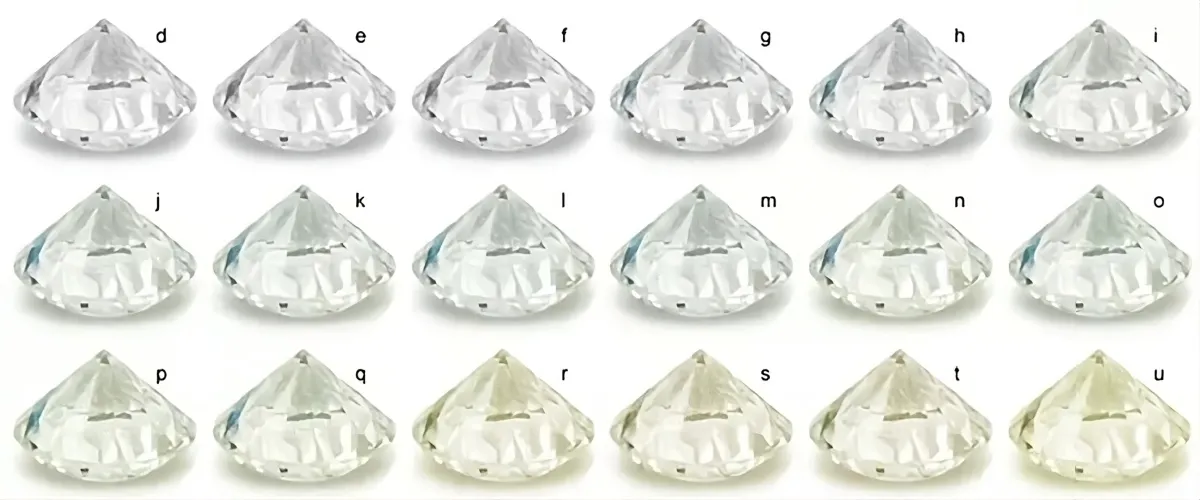
Where does the color of the diamond come from?
This diamond color is completely natural and comes from trace elements such as nitrogen or boron, present during the creation of the carbon crystal (diamond). These trace elements are in such small quantities in the diamond that they are measured in millionths during laboratory analyses. It is these trace elements that make the diamond color and the more there are, the more intense the color is.
How to identify the color of a diamond?
If you wish to compare the color of diamonds with the naked eye, it will be impossible to find the right category and notice a difference unless there is a gap of two to three color categories.
The levels between the different categories are so minute and precise, that it will be very difficult for you, and even for an expert, to discern a difference of a single category when ideal conditions are not met (when we talk about ideal conditions, it's in a laboratory with sharp and suitable tools for analyzing the color of the diamond).
That's why a diamond's category can only be properly evaluated in a GIA, HRD or IGI laboratory. These laboratories are the only ones capable of clearly identifying the color and category of the diamond. Therefore, it is important that your diamond is certified by a GIA, HRD or IGI laboratory.
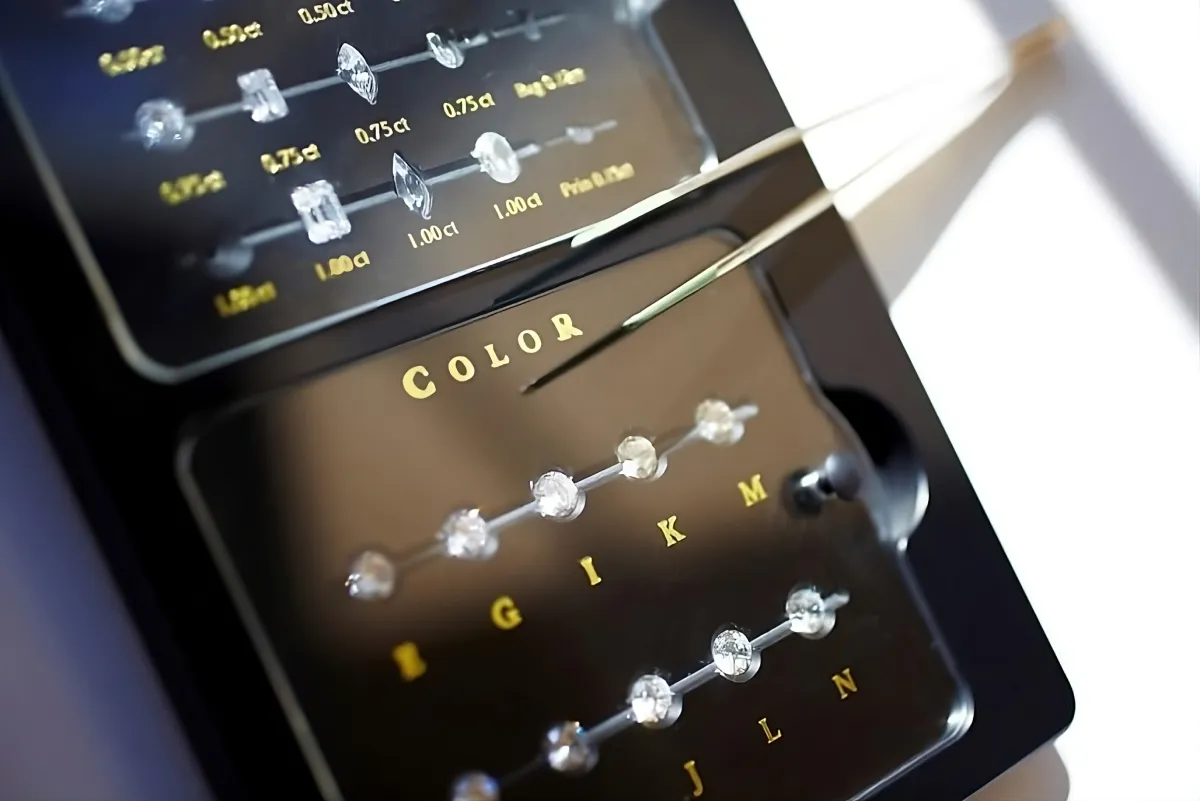
How to choose the color of your diamond?
Color D is the best color and the lowest is Z. Choose a color between D and I for the diamond to be white; below that it may appear yellow.
For a diamond of exceptional whiteness, it is better to choose between D and G.
Should we compromise on the color of the diamond?
Clarity and color are two very essential factors of diamond quality. But then, what should be prioritized: color or clarity?
It is difficult to answer this question as everyone has their sensitivity towards a diamond. We advise our customers to work on colors between F and I depending on the use of the diamond. Of course, if your budget allows, we will lean towards the top of the list.
Clarity / Color Mix in the purchase decision aid
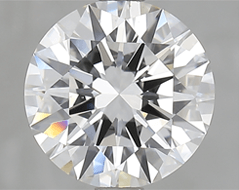
VS2 Diamond
Each diamond has a degree of clarity, to learn more, do not hesitate to check out our section on the purity of the diamond! There is therefore a precise range of clarity degrees for each diamond. The degree will be said "SI1" or "VVS2". There is a "magic zone" where VS2, SI1 and SI2 diamonds are the perfect clarity range for low-cost diamonds. If you do not understand these barbaric terms it is not serious here. To put it simply, the magic zone includes a category of diamonds that are often clear to the naked eye and are not considerably expensive.
Be careful, just because you choose a diamond with SI1 clarity for example, it does not mean it will be free of defect. That's why it's very important to make sure the diamond is certified by an approved laboratory (like GIA, HRD or EGL).
Compromise on diamond color:
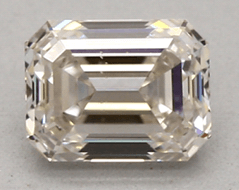
Diamond color K
It is easier to compromise on the color of the diamond, in fact you can choose the shade of color that you like. Keep in mind that the more a diamond is tinted the less expensive it is. For example: For a D diamond its price is around 11,000€ while for another diamond with the same characteristics but of shade K its price is 4,000€.
It is not necessary to choose a diamond with a shade higher than G if you do not have a large budget. Shades H to L are somewhat the "magic zone" of diamond color. Moreover, the shade of yellow is mostly on the side of the diamond and not the face which is the part that is most seen when the diamond is mounted on a jewel. And if you choose a shade like J, K or L choose a yellow gold setting and your diamond will appear whiter.
SO, CLARITY OR COLOR?
If your diamond is eye-clean, then you are not obliged to increase in clarity quality. You might be lucky and have a gem in the magic zone clean to your eyes.
For color, it is difficult to distinguish the difference between a D diamond and an F diamond. The difference is more striking when comparing a D diamond to a G diamond. The color of the diamond is also a matter of taste, it's the color you will enjoy looking at for hours.
The most logical thing is to give priority to color on the sole condition of ensuring that the diamond is eye-clean.
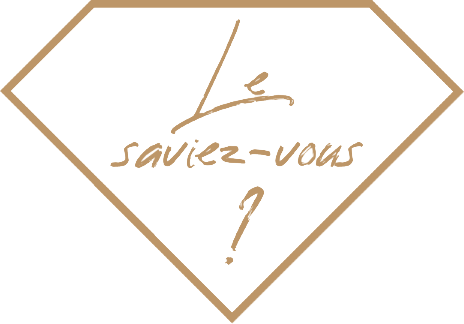
1. The color of the diamond is natural or artificial.
2. Only qualified professionals can differentiate certain shades from each other.
3. Why does the GIA classification scale start with the letter D? The GIA simply standardized the "classic" rankings by starting its new scale with the letter D instead of starting with the letter A. To be honest, to qualify the most colorless diamonds in the world, something unique was needed and what better than the first letter of these exceptional stones.
Why is the color of the diamond natural or artificial?
Natural diamonds come from mines. The diamond you are wearing on your finger right now is several million years old. Indeed, natural diamonds were formed millions of years ago in the Earth's mantle or during a collision with an asteroid. Yes, it's important to remember that a diamond is first and foremost a real stone! A diamond is made of carbon, and crystallizes at high temperature and high pressure (typically the conditions present in an asteroid collision). The purest diamonds are composed only of carbon, which has the power to act as a prism: it refracts all colors and does not absorb any.
But why are there color shades in natural diamonds?
The two techniques used are irradiation and thermo-pressure. Irradiation will be used to turn a J diamond, for example, into a colored diamond (blue, pink, green...). The other technique is used to lighten a diamond that is a bit too yellow using high pressure and temperature (recreating the conditions of a diamond's formation). To be sure not to buy a treated diamond, you must demand a laboratory certificate on which HTHP (thermo-pressure) or irradiation treatment should not be mentioned. If nothing is mentioned, your diamond is natural.
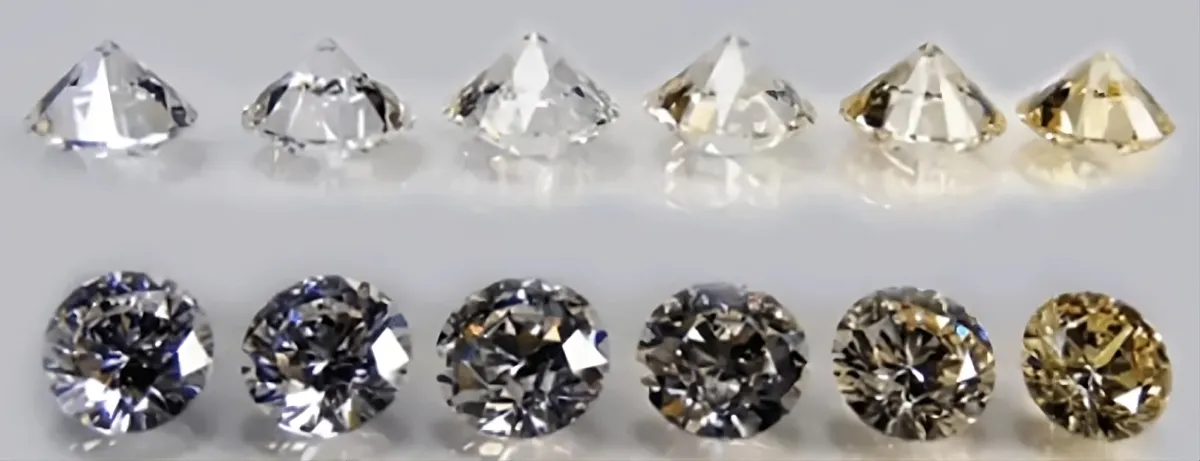
The two techniques used are irradiation and thermo-pressure. Irradiation is used to turn a J diamond, for example, into a colored diamond (blue, pink, green...). The other technique is used to lighten a diamond that is a bit too yellow using high pressure and temperature (recreating the conditions of a diamond's formation). To be sure not to buy a treated diamond, you must demand a laboratory certificate on which HTHP (thermo-pressure) or irradiation treatment should not be mentioned. If nothing is mentioned, your diamond is natural.
And synthetic diamonds?
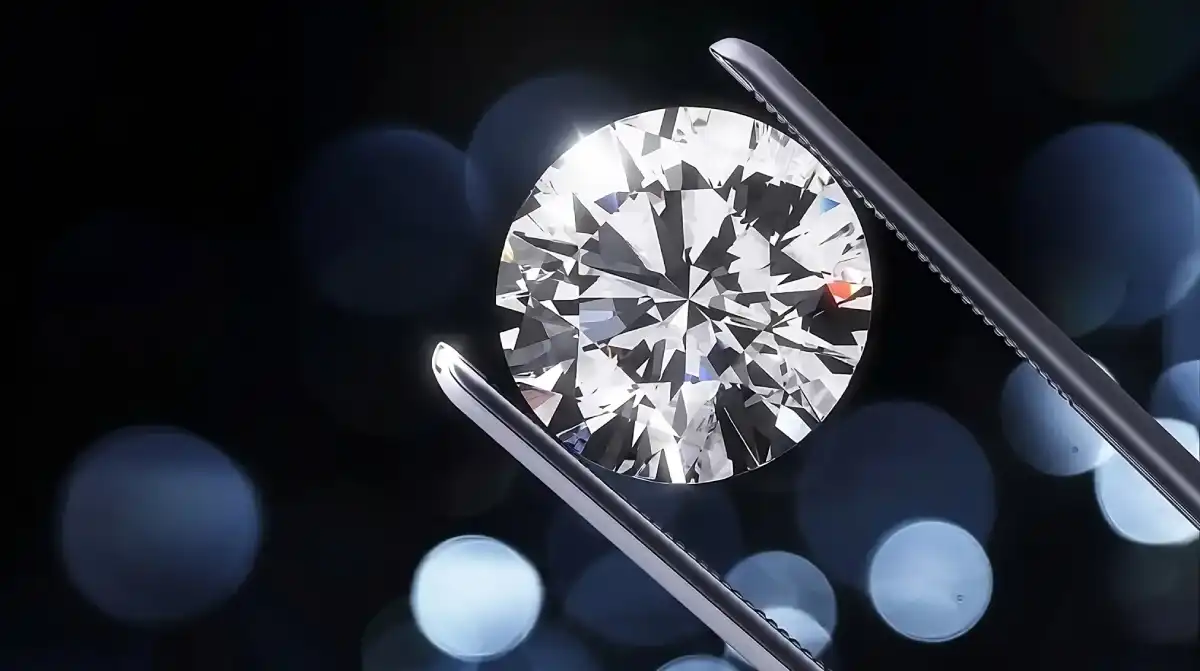
With the magic of science, synthetic or artificial diamonds are created in the laboratory. This creates diamonds that contain almost no nitrogen and therefore have no yellow hue. Like all stones, diamonds also have inclusions (an internal characteristic of the gem resulting from its crystallization) so they also need to be created to make the stone appear more natural than nature. Laboratories then add elements such as boron, ammonia or nitrogen. Finally, it doesn't stop there, it is possible to create synthetic diamonds in a color that does not exist naturally. If "Natural Diamond" is mentioned on your diamond's authentication certificate, then you are the proud owner of a natural diamond.
THE DIAMOND DEALER'S ADVICE:
Why do we choose a diamond? A diamond shines with a thousand lights, it is the symbol of love and always makes an impact when worn on a finger, around the neck, on the wrist... So its color is very important, you have to be demanding. As always, we recommend the importance of ensuring that your diamond is indeed certified by a laboratory (GIA, IGI, HRD...).
The choice of the stone's color should also depend on the color of the metal on which it will be set. The more yellowish the shade (H, I, J) the more preferable it is to have a golden metal. Prioritize the whiteness of the stone over its purity. We recommend not resorting to a degree of purity lower than the magic zone for stones of 0.70 carat and more.
Demand a certificate for colors D to G attesting these exceptional colors. You are not obliged to buy a D diamond to have a good diamond color. An H diamond is enough and you will save money!
Congratulations! You are now an expert in understanding diamond color, don't forget to insist on checking your diamond's certificate carefully when the chosen diamond is certified.
Discover the other criteria of the 4Cs of diamond:








NEWSLETTER
Sign up to receive the latest news regarding
the products and services CELINNI, and much more.





















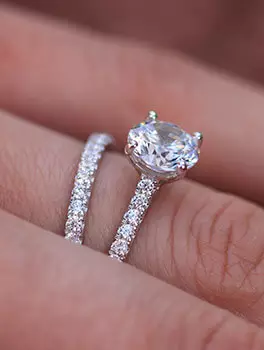
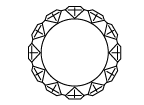
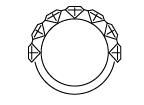
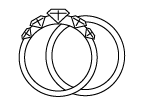







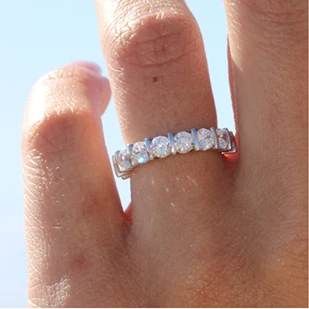
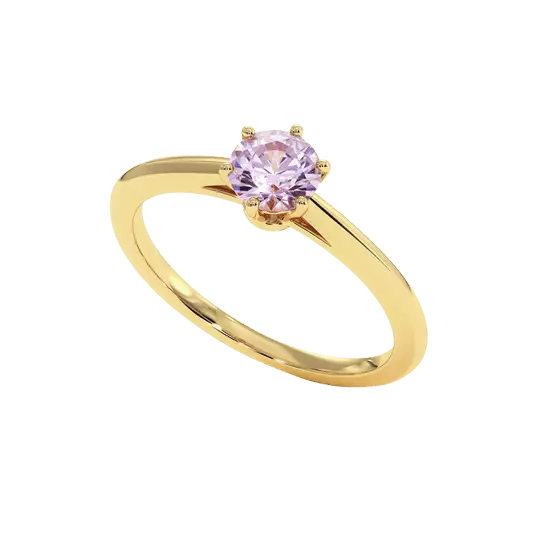
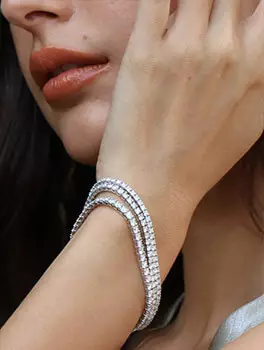
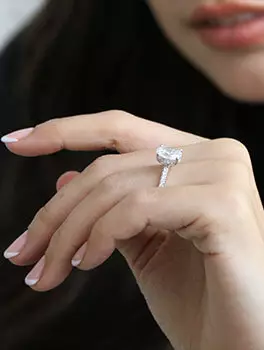
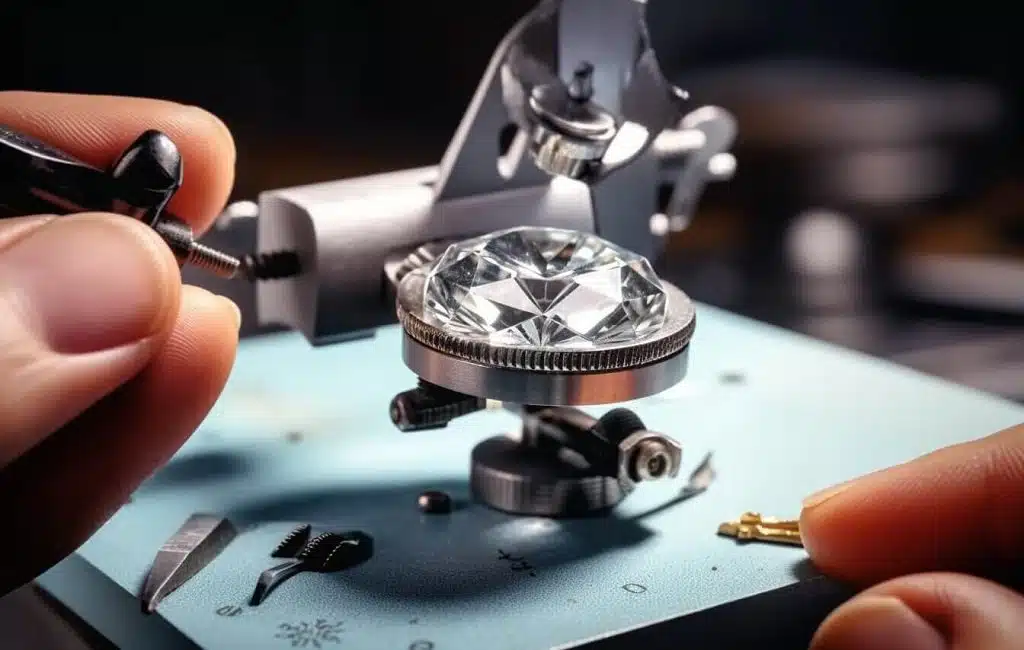
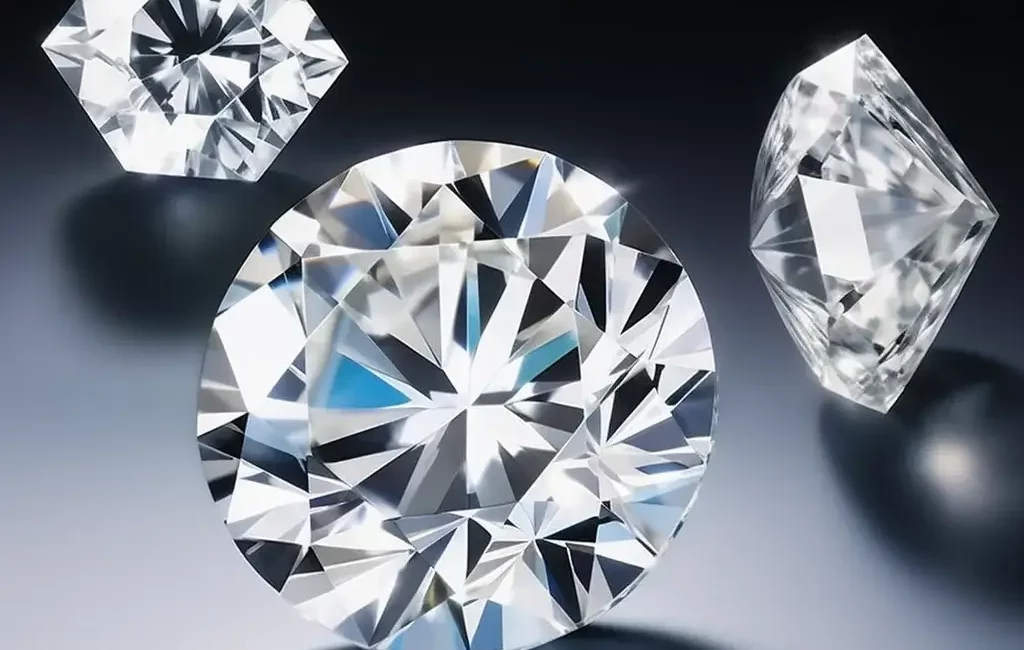
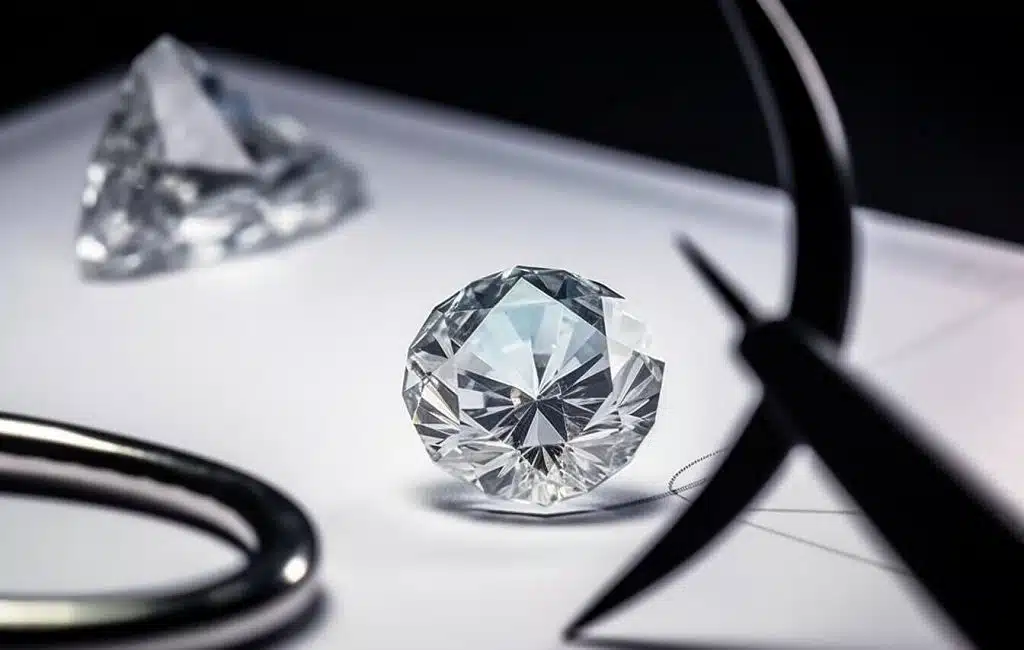
Color D or Exceptional White +
The king of diamonds is the highest and rarest quality. The gem has the appearance of pure ice. To the expert eye, no color is perceptible, the diamond is then considered perfect.